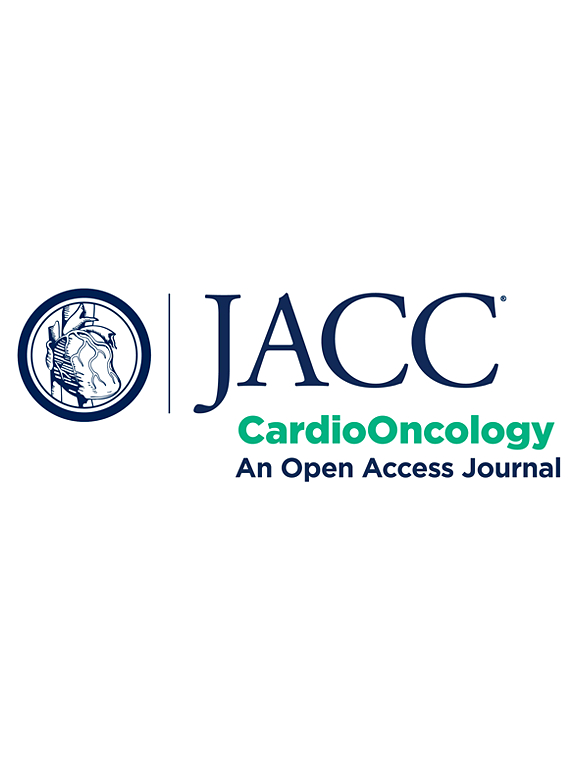The Association of Malignancy With Stroke and Bleeding in Atrial Fibrillation
IF 12.8
1区 医学
Q1 CARDIAC & CARDIOVASCULAR SYSTEMS
引用次数: 0
Abstract
Background
It is undetermined if malignancy independently increases stroke risk in atrial fibrillation (AF).
Objectives
This study sought to determine the association of malignancy with stroke and bleeding in AF.
Methods
Population-based cohort study using administrative datasets of people aged ≥66 years with newly diagnosed AF. People diagnosed with malignancy within 5 years before AF diagnosis were matched to cancer-free control subjects on age, sex, AF diagnosis details, CHA2DS2-VASc score, and ATRIA bleeding score. Outcomes included hospitalizations for stroke and hospitalization/emergency visits for bleeding. Cause-specific regression was used to determine the HR for malignancy after adjusting for time-varying anticoagulation status. Analyses were repeated for specific subgroups of cancer patients (with matched control subjects).
Results
Among 199,710 AF patients, 24,991 (12.5%) people had prior malignancy. Malignancy was associated with more inpatient diagnoses of AF (vs outpatient) and less anticoagulation. We matched 43,802 people with AF (21,901 with malignancy, mean age 78.1 years; 59.5% male). After adjusting for anticoagulation status, malignancy had a similar hazard of stroke (HR: 1.01; 95% CI: 0.88-1.15) but higher hazard of bleeding (HR: 1.45; 95% CI: 1.37-1.53) compared with cancer-free control subjects in the matched sample. Analyses of cancer subgroups with comparison to matched control subjects mostly showed consistent results, except for: 1) increased hazard of stroke in lung cancer; and 2) lack of increased bleeding hazard in breast cancer and lymphoma.
Conclusions
People with AF and malignancy generally had similar hazards of stroke but higher hazards of bleeding compared with cancer-free control subjects, suggesting that malignancy should not lower the threshold for anticoagulation in AF.
心房颤动患者恶性肿瘤与卒中及出血的关系
背景:恶性肿瘤是否会独立增加心房颤动(AF)的卒中风险尚不确定。本研究旨在确定AF中恶性肿瘤与卒中和出血的相关性。方法基于人群的队列研究,使用≥66岁新诊断为AF的患者的管理数据集。在AF诊断前5年内诊断为恶性肿瘤的患者与无癌对照者在年龄、性别、AF诊断细节、CHA2DS2-VASc评分和心房出血评分方面进行匹配。结果包括因中风住院和因出血住院/急诊。在调整时变抗凝状态后,使用原因特异性回归来确定恶性肿瘤的HR。对癌症患者的特定亚组(与匹配的对照受试者)重复分析。结果在199710例房颤患者中,24991例(12.5%)患者既往有恶性肿瘤。恶性肿瘤与房颤住院诊断率较高(与门诊诊断率相比)和抗凝治疗较少相关。我们匹配了43,802名AF患者(21,901名恶性肿瘤患者,平均年龄78.1岁;59.5%的男性)。在调整抗凝状态后,恶性肿瘤与卒中的风险相似(HR: 1.01;95% CI: 0.88-1.15),但出血风险较高(HR: 1.45;95% CI: 1.37-1.53),与匹配样本中无癌对照者相比。癌症亚组的分析与匹配的对照组相比,结果基本一致,除了:1)肺癌卒中风险增加;2)乳腺癌和淋巴瘤患者出血危险性增高。结论与无癌对照相比,房颤合并恶性肿瘤患者卒中风险相似,但出血风险较高,提示恶性肿瘤不应降低房颤抗凝阈值。
本文章由计算机程序翻译,如有差异,请以英文原文为准。
求助全文
约1分钟内获得全文
求助全文
来源期刊

Jacc: Cardiooncology
Multiple-
CiteScore
12.50
自引率
6.30%
发文量
106
期刊介绍:
JACC: CardioOncology is a specialized journal that belongs to the esteemed Journal of the American College of Cardiology (JACC) family. Its purpose is to enhance cardiovascular care for cancer patients by publishing high-quality, innovative scientific research and sharing evidence-based knowledge.
The journal aims to revolutionize the field of cardio-oncology and actively involve and educate professionals in both cardiovascular and oncology fields. It covers a wide range of topics including pre-clinical, translational, and clinical research, as well as best practices in cardio-oncology. Key areas of focus include understanding disease mechanisms, utilizing in vitro and in vivo models, exploring novel and traditional therapeutics (across Phase I-IV trials), studying epidemiology, employing precision medicine, and investigating primary and secondary prevention.
Amyloidosis, cardiovascular risk factors, heart failure, and vascular disease are some examples of the disease states that are of particular interest to the journal. However, it welcomes research on other relevant conditions as well.
 求助内容:
求助内容: 应助结果提醒方式:
应助结果提醒方式:


